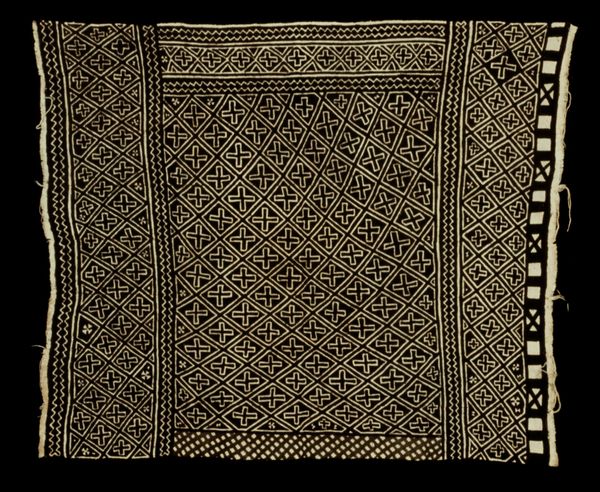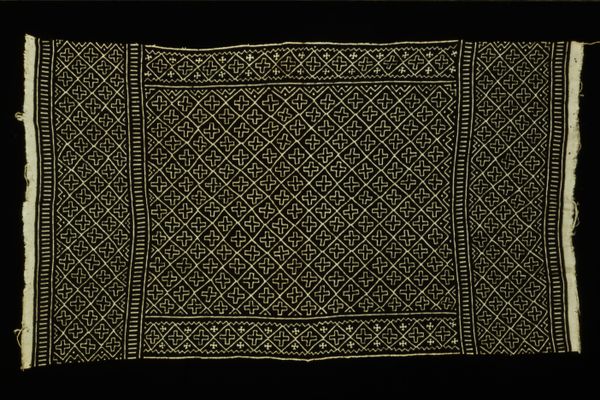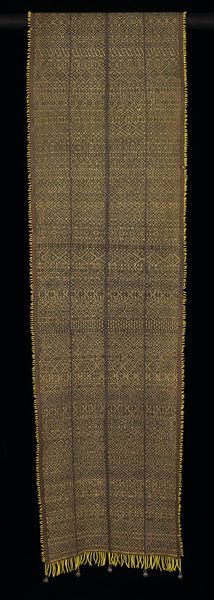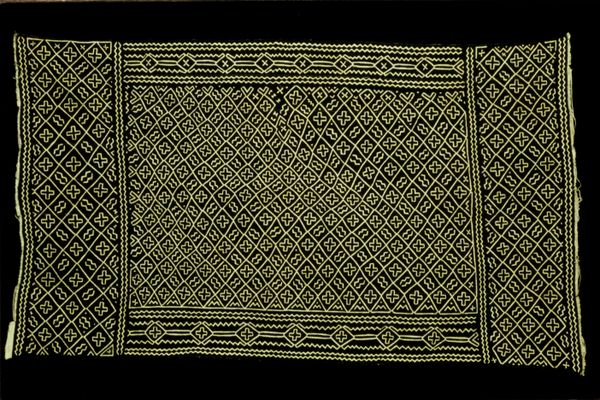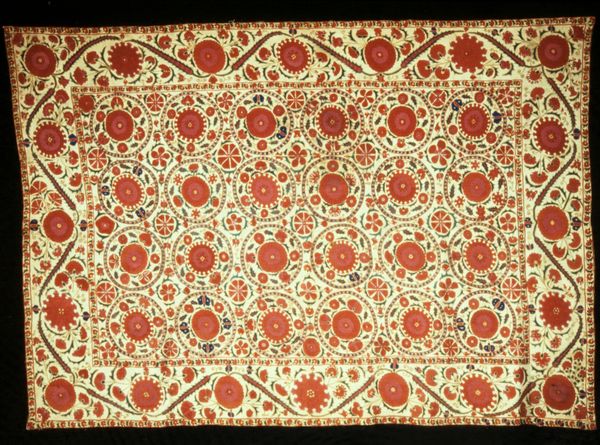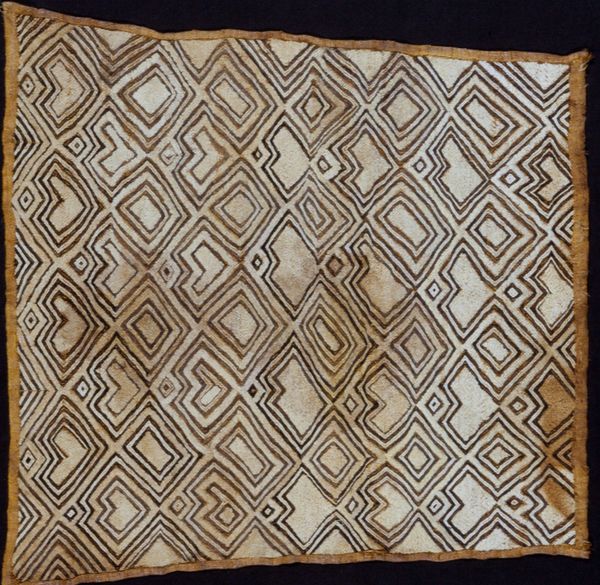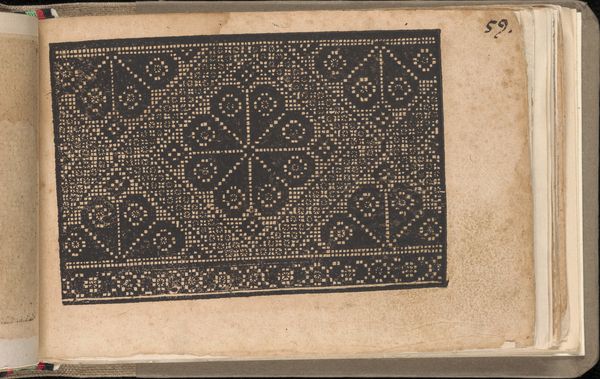
weaving, textile, cotton
#
african-art
#
natural stone pattern
#
man-made pattern
#
weaving
#
textile
#
geometric pattern
#
repetitive shape and pattern
#
organic pattern
#
geometric
#
repetition of pattern
#
intricate pattern
#
pattern repetition
#
cotton
#
layered pattern
#
repetitive pattern
Dimensions: 43 1/4 x 53 in. (109.9 x 134.6 cm)
Copyright: Public Domain
Curator: This textile, entitled "Mud cloth," dates back to around the 1980s. It can be found right here at the Minneapolis Institute of Art. Editor: It's so striking. There's an immediate sense of graphic power to the high-contrast, repetitive geometric motifs. It feels almost architectural, in a way, like a blueprint. Curator: Precisely! The graphic nature speaks to its significance within broader African art traditions, especially considering its function and origins as a textile rooted in the Bamana culture of Mali. These cloths carry deep historical and social meaning, functioning as a visual language. Editor: Ah, and I see how that relates to the formal elements, specifically, how it evokes the weight and permanence of certain visual symbols and how those symbols take on cultural and even psychological dimensions over time. Do the individual symbols carry specific meanings within Bamana culture? Curator: Absolutely. This practice, called bògòlanfini, traditionally features symbols connected to status, genealogy, or even historical events. Furthermore, the act of creating the textile, the mud-dyeing process, itself holds ritual significance related to womanhood and the life cycle. Editor: The idea that creating art can be a marker of life's stages! That connects to larger discussions of art and identity, of the body... Did the pattern influence contemporary theories of body art and coverings? Curator: That's definitely an active area of art historical dialogue, especially when looking at issues surrounding cultural appropriation versus engagement, and how visual languages translate (or don't) across contexts. Editor: Looking at this again, it seems charged with intent. Now I also see how this cloth serves not just as an aesthetic object, but also as a historical and societal document. Curator: Yes, it is such a powerful intersection. And the cloth challenges our modern views of art making. What might seem simple, even decorative, carries complex, layered stories. Editor: Well, this glimpse has given me much to think about! It's amazing how threads of art carry stories from Mali through present-day aesthetic ideas.
Comments
No comments
Be the first to comment and join the conversation on the ultimate creative platform.
